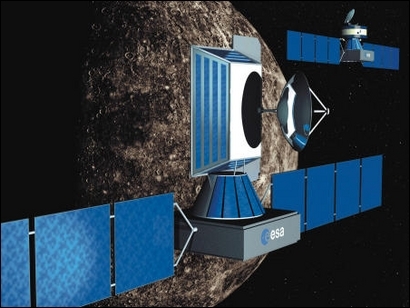7 December 2004
Mercury close up

The U.S. Mariner 10 probe brushed past Mercury 3 times between 1974 and 1975, bringing scientists some 4,000 pictures and a wealth of temperature and magnetic field measurements. But it was only able to cover half of the planet’s surface.
No mission has been back to Mercury since. Europe’s Bepi-Colombo is now set to fill this gap by looking at Mercury in close detail.
The mission’s chief science objectives are to study:
- Mercury’s origins and evolution, driven mainly by its proximity to the Sun
- its inner structure and composition
- processes shaping its surface, such as impact cratering, tectonics and volcanic activity
- its magnetosphere

CNES is funding instruments or French contributions ultimately selected for the mission. It is also coordinating oversight of development work and providing engineering support and expertise.
Waiting for samples
French planetologists have also reaffirmed the exploration of Mars, already well underway with the recent European Mars Express and U.S. Mars Exploration Rover missions, as their number one priority. The red planet is now being studied from orbit and through in-situ investigations, and ultimately samples will be brought back to Earth.
But the 1st Mars sample return mission will not depart before 2013, leaving a window of opportunity for in-situ analysis in the intervening period.
But the 1st Mars sample return mission will not depart before 2013, leaving a window of opportunity for in-situ analysis in the intervening period.

With this aim in mind, NASA’s Mars Science Laboratory (MSL) mission, to be launched in 2009, intends to land a large rover weighing about 600 kg and equipped with a suite of sophisticated instruments to probe the Martian environment.
MSL’s size and features will give it the ability to operate for a long period and over long distances—several tens of km compared to the 600 m covered so far by the Spirit and Opportunity twin rovers currently on Mars, thus holding out the prospect of exploring the planet at regional scales.